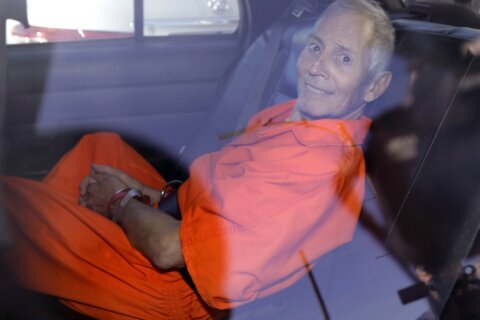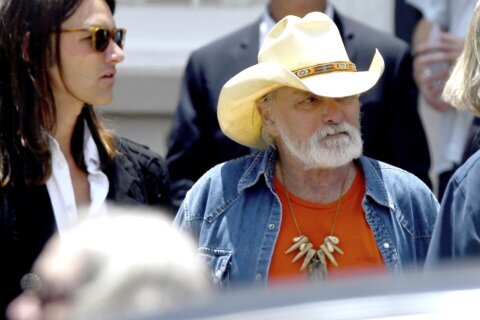WASHINGTON — Sometimes a valiant effort of a film — talented cast, daring director, compelling subject matter — is overshadowed by a better film of the same genre released just weeks apart.
That’s the case with “Truth” (in theaters now) and its journalism colleague “Spotlight” (opening in D.C. on Nov. 13). Not only are they both newsroom dramas based on true stories, the former casts Robert Redford as former CBS News anchor Dan Rather, while the latter concerns Ben Bradlee Jr., whose father served as editor for Redford’s Bob Woodward in “All the President’s Men” (1976).
While “Spotlight” is a masterpiece that should compete for Best Picture — and might even win it — “Truth” is a mostly gripping effort plagued by some unfortunate baked-in flaws. One movie shows the power of great journalism to protect the public; the other shows the damage of half-baked reporting.
Set during the 2004 presidential campaign, “Truth” recounts the “60 Minutes” report that questioned whether President George W. Bush dodged Vietnam to enter the Texas Air National Guard (airing the same time as Swift Boat ads against John Kerry). Instant claims of forged documents prompted CBS News to conduct an internal investigation, issue an on-air apology, fire producer Mary Mapes (Cate Blanchett) and force the resignation of Watler Cronkite’s longtime successor Rather (Redford).
Viewers deserve an instant disclaimer: the film is based on Mapes’ own 2005 book, which is a shame because her character comes across more defensive than remorseful. That’s not to say she didn’t do some great work in her career, including a Peabody for exposing the horrors of Abu Ghraib. But during this scandal — known as the Killian Documents Controversy — her CBS News team blew it.
Knowing this disclaimer going in, the film is still very well-made from a nuts-and-bolts storytelling standpoint, thanks to an insanely riveting plot adapted by writer/director James Vanderbilt.
“I read it not at first with the eye toward making a movie … but I think as I got farther and farther into it, I just got more and more interested,” Vanderbilt tells WTOP. “I love journalism films. ‘All the President’s Men’ was such a formative movie for me when I was younger, and ‘Zodiac’ is also in a way a journalism film too, so I’ve always been fascinated with that world. The more I started thinking about it, I started thinking there might really be something here.”
So, Vanderbilt convinced Mapes to option the book to use as his directorial debut, having written “Zodiac” (2007) for David Fincher and “White House Down” (2013) for Roland Emmerich. He says it was great to watch those craftsmen work before taking his own stab at the director’s chair.
“There’s a bit of a learning curve … but I’ve been able to be on sets and watch really great directors work,” Vanderbilt says. “Watching David Fincher work is just so great, because he’s so focused. … It’s like playing chess. He sees the whole board. He knows how every frame will make you feel visually. … Roland’s approach to it is: ‘This is so much fun, I get to make movies, how cool is that?’ I thought that’s a great sort of attitude to have. … The cast would tease me that I was relentlessly upbeat.”
That cast, of course, includes Redford, who delivers a beautifully understated performance as the elder statesman. He may not look exactly like Rather, but he masters his vocal patterns with a certain gravitas behind the newsdesk and a father-figure warmth in his off-air interactions with Mapes.
Vanderbilt says it was dream casting to have Redford play the part.
“I wrote him this letter and told him how much ‘All the President’s Men’ had meant to me … and how fascinating it was the idea of him playing a journalist again in the modern day, and how that was a film about two people doing a story about the president of the United States, and how this is a film about two people doing a story about the president of the United States, and they obviously turn out in two very different ways. I thought him being in this film … they could be really interesting bookends.”
Vanderbilt says Blanchett came on board first, which helped convinced Redford to take the leap.
“I knew that I couldn’t go to Bob until — by the way, I can call him ‘Bob!’ — I knew that he would want to know who would play Mary. So once we had Cate … I think I said please a lot, and oh by the way, your screen partner is going to be Cate Blanchett. That’s better than a kick to the teeth.”
Blanchett’s casting makes the entire movie, carrying the private wounds of an abusive childhood and the public persona of Faye Dunaway in “Network” (1976). Once again, Blanchett proves she’s arguably the best actress of this generation, from “The Aviator” (2004) to “Blue Jasmine” (2013).
“I think we’re going to look back on her career and go, ‘One of the greats.’ We already do!” Vanderbilt says. “In terms of how I got her, I’m still trying to figure that out. I wrote the script, we sent it to her through her agent, and they actually sent it to her the day after she won the Academy Award. The morning after! And I went, there’s no way. Nobody wins their second Academy Award and then goes, ‘You know? I should really work with a first-time director next. That’s a great idea.'”
Vanderbilt says he had to suppress some fanboy instincts while working with both stars.
“I really just had to not think about it,” he says. “I told myself, ‘This is just Bob and Cate who you work with.’ After we wrapped, I went back to Los Angeles and one night about two weeks later, I was at home clicking around TV, and ‘Butch Cassidy & The Sundance Kid’ was on. One of my favorite movies. … And I had this moment where I went, ‘Oh my god! I directed Robert Redford in a movie!'”
After “Truth,” Vanderbilt has certainly earned the right to keep directing, pulling stellar performances from Redford, Blanchett and a supporting cast of Dennis Quaid, Elisabeth Moss and Bruce Greenwood. His pacing engages us from start to finish, particularly a gripping scene where Lt. Colonel Bill Burkett (Stacy Keach) squirms under the hot interview lights. As Rather’s superiors hand him cue cards to grill the guy, we wonder who’s sweating more: interviewer or interviewee. Brilliant.
His overall vision also deserves points for originality, thanks to the unique concept to follow a piece of botched journalism, rather than a successful “follow the money” investigation. This fall from grace is incredibly compelling to watch, as the characters transform from triumph to tragedy, charging out of the gate with false confidence, then helplessly watching the story — and their lives — fall apart.
“It’s such a fascinating time in journalism,” Vanderbilt says. “I grew up with the Voice of God journalism, and now we’re in such a different place. This (CBS News controversy) is a fulcrum point moment when that changed, and so I think that makes that story amazingly compelling. … I think there’s something so important about asking questions and asking questions of people in power.”
In the interest of asking questions and holding folks accountable, it’s time for some nitpicky negative critiques. For all its compelling plot strengths, the overall message comes across a bit heavy-handed, whether it’s Blanchett’s son interviewing his mother about the importance of asking questions, or the hothead reporter (Topher Grace) giving a newsroom monologue about Viacom’s corporate takeover.
Even if you agree with some of these social commentary sentiments, it makes us uneasy to grab our bullhorns and echo them, because these characters did such irreparable damage to the news profession. The film would have been far better served to paint the characters as fallen figures who admit they screwed up, rather than misunderstood scapegoats who were taken down by The Man.
Top-down corruption absolutely exists, but sometimes, you have to look in the mirror and not blame the powers that be. It’s hard to give the benefit of the doubt to an event that set journalism back decades, severing public trust and opening the floodgates to biased cable news hosts (Glenn Beck), 24-7 coverage of missing planes (CNN) and admitted nightly-news lies (Brian Williams).
The mantra should always be: “Get it right, then get it first.” End of story. Mapes and Rather rushed a half-baked story before they had it. The film takes a moral stance that the ends justified the means — that these journalists were duped by an unreliable source, but were actually onto something with the larger point about the president. That may or may not be true, but what’s the point if you can’t prove it?
If Woodward and Bernstein ran the story too early — before they had actual proof from reliable sources — Nixon would have stayed in office, the Watergate would simply be a fancy hotel, and “All the President’s Men” would not exist. If you’re going to make such serious charges, you better have your sources air tight. If you go off half-cocked, you ruin any credible chance at persuasion.
In politics — and filmmaking — the goal should not be how much you thrill your own side, but how well you convince the opposing side. Preaching to the choir gets us nowhere. This is the problem with the script being based on Mapes’ own book — there’s too much self-serving hero worship. The result feels defensive with an agenda to the “where are they now” end credits. We’re never quite sure we’re getting the whole truth and nothing but the truth. I swear we can handle it! Right, Jack Nicholson?
Such unease could have been tempered if the final image ended with a more bittersweet image. We think we’ll get this during Rather’s final sign off, as the screen fades to black — the perfect place to end it. Instead, we see the entire studio clapping for him as he walks away a champ in slow-motion.
This is the key difference between “Truth” and “Spotlight.” “Spotlight” cuts to black at just the right moment — so much that David Chase (“The Wire”) voiced his approval at the screen — while “Truth” sticks around too long for more sentimentalized glorification of botched journalists.
Yes, this is the safer way to go, to neatly wrap it up with a hero shot before the credits roll. But if you want to leave us breathless with a 4-star cinematic masterpiece, you gotta take more chances. This requires one dangerous thing, articulated in Rather’s own signature signoff: “Courage.” It also requires something practiced by the “Spotlight” filmmakers — and source journalists — restraint.

The above rating is based on a 4-star scale. See where this film ranks in Jason’s Fraley Film Guide. Follow WTOP Film Critic Jason Fraley on Twitter @JFrayWTOP.








